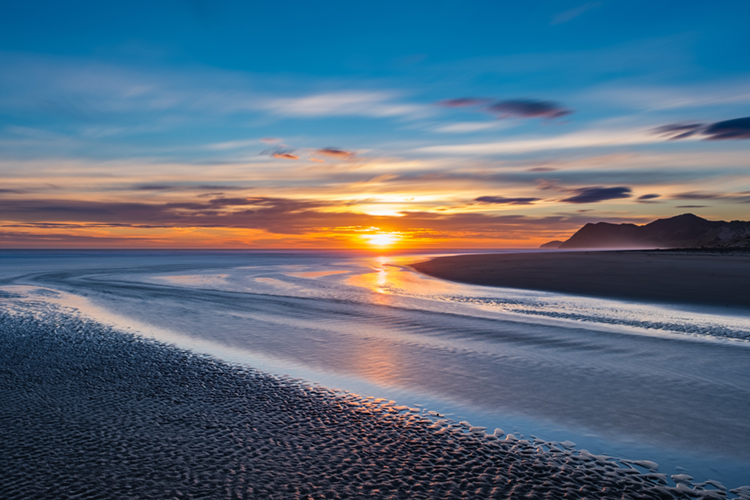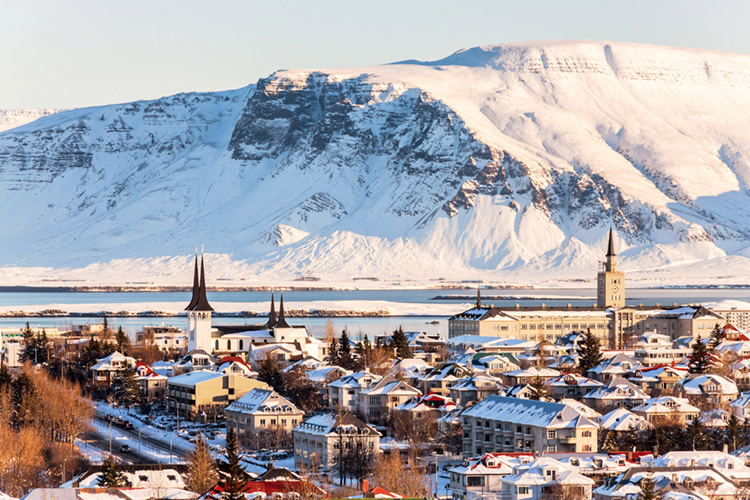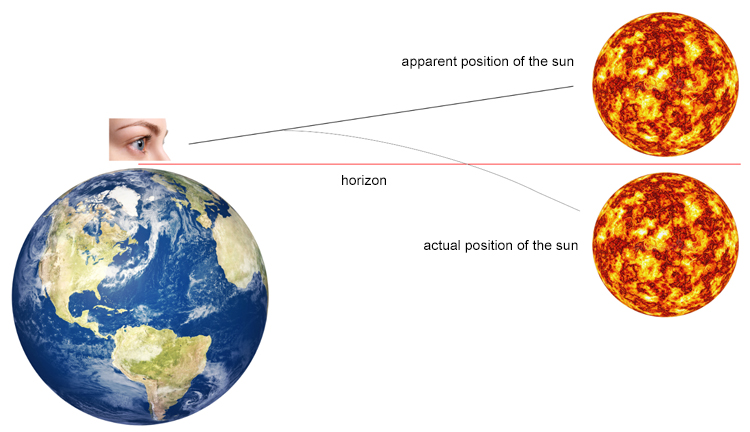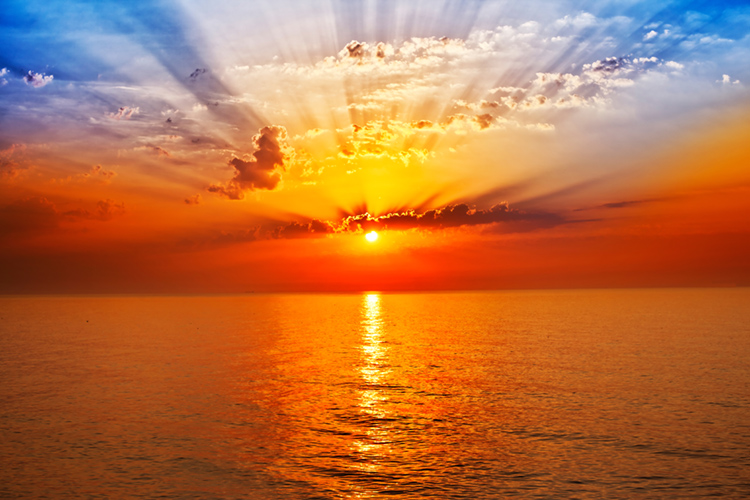Where does the Sun rise and set? Why are days longer in summer and shorter in winter? Take a look at a few curious and fascinating facts about sunset and sunrise.
There is nothing more pleasing and rewarding than witnessing the Sun rise in the morning and set in the evening behind a snowy mountain or a calm sea.
The "Golden Hour" turns daylight into a red, orange, and yellow palette - the golden tones - and makes life worth living.
We all know that the precise time of sunrise and sunrise depends on our location, but some might not know that it is also different for people aboard an airplane.
During sunrise and sunset times, the first thing that strikes us is the color of the Sun's rays. But what gives the Sun and sky a golden glow?
It all happens due to a phenomenon called "scattering."
When the Sun is low on the horizon, small particles and water droplets in the atmosphere force sunlight to change direction.
As a result, shorter wavelength colors like blue and violet get scattered out, leaving only the longer wavelength colors like yellow, orange, and red available to our eyes.
On the other hand, when the Sun is high in the sky, blue light is scattered more by oxygen and nitrogen molecules than all other colors because it travels as shorter, smaller waves. And that is what makes the sky look blue.

Sunrise in the East, Sunset in the West
But why does the Sun rise in the east and set in the west?
In fact, you will always see the Sun rising in the east because the Earth rotates on its axis from west to east. In other words, it spins toward the east, making it look like the Sun is moving west.
To be more specific, at the Equator line, the Earth rotates at around 1,037 miles per hour (1,669 kilometers per hour).
As a result, and from an astronomical perspective, the planet's first sunrise and sunset each and every day occur in New Zealand's East Cape.
On December 29, 2011, Samoa skipped a day, jumped forward in time, and switched time zones.
And even though the island is located east of New Zealand, the curvature of the Earth grants Kiwis the chance to witness the first sun rays of every new day.
But why is Japan known as "the land of the rising Sun"? Unlike many people think, the Japanese are not the first to watch the Sun coming up in the morning.
The expression was coined by Prince Regent of Japan, Shotoku (574-622 AD), in a letter sent to China's Emperor Yang of Sui.
Shotoku presented himself as "the Son of Heaven in the land where the Sun rises to the Son of Heaven in the land where the Sun sets."

The Longest and Shortest Daylight
Which capital city has the longest and shortest days? The correct answer is Reykjavik, the capital of Iceland, located at a latitude of 64 degrees north.
The world's northernmost capital city has the longest hours in the summer and the shortest hours of daylight during the winter.
On June 21, Reykjavik enjoys 21 hours and 45 minutes of daylight.
On December 21, the Sun barely rises at 11:20 am and rests low on the horizon until it vanishes around 3:30 pm.

Sunset and Sunrise Times
At what time does the Sun rise? When does the Sun set? There are many interesting facts about the first and last sun rays of the day.
Did you know that the United States Naval Observatory in Washington receives around 1,000 requests a year for the precise time of sunrise and sunset for a given location for criminal cases and lawsuits?
And what about the meaning of the popular saying "red sky at night, sailors' delight"?
It means that a reddish sky at dusk indicates that a high-pressure system is coming in, and good weather will follow in the morning.
Have you ever wondered why islands, deserts, and arid regions witness the most beautiful sunrises and sunsets?
The reason is that the air is less polluted with small particles, and light doesn't scatter as much as in urban areas.
Finally, remember that the next time you see the Sun going down at your favorite location, it will actually be already gone.

Why? It occurs because of a phenomenon called atmospheric refraction. In other words, light "bends" when it goes from a less dense medium to a more dense medium.
You can see this in how your legs look shorter and bend underwater.
The same thing happens with the light coming from the Sun, as it goes from the vacuum of space into Earth's atmosphere.
So, the sunlight coming from below the horizon bends around the Earth, and you see an image of the sun above the horizon.
What you're seeing is the apparent Sun, not the actual Sun position.
Many online calendars, tables, charts, and graphs allow you to check the sunrise and sunset times for today, tomorrow, and the following days.

Twilight, Dawn/Sunrise, and Dusk/Sunset
There are several expressions commonly - and sometimes mistakenly - used to designate sunrise and sunset.
The first thing that we need to understand is the concept of twilight.
Twilight designates the time when there is light, but the Sun is technically below the horizon. It happens in the morning (dawn) and the evening (dusk).
There are three types of twilight, and they are all defined by the angle of the Sun.
Civil twilight occurs when the Sun is six degrees below the horizon, and there is enough light (dawn) or not enough light (dusk) for humans to distinguish (or not) physical objects with or without artificial lighting - like car lights.
Nautical twilight occurs when the Sun is between six and 12 degrees below the horizon, and there is enough light (dawn) or not enough light (dusk) for sailors to navigate the sea.
Astronomical twilight occurs when the Sun is between 12 and 18 degrees below the horizon, and the sky is not dark enough (dawn) or dark enough (dusk) for astronomers to make astronomical observations of stars.
In other words, dawn is the time of day before sunrise, and dusk only takes place after sunset.
